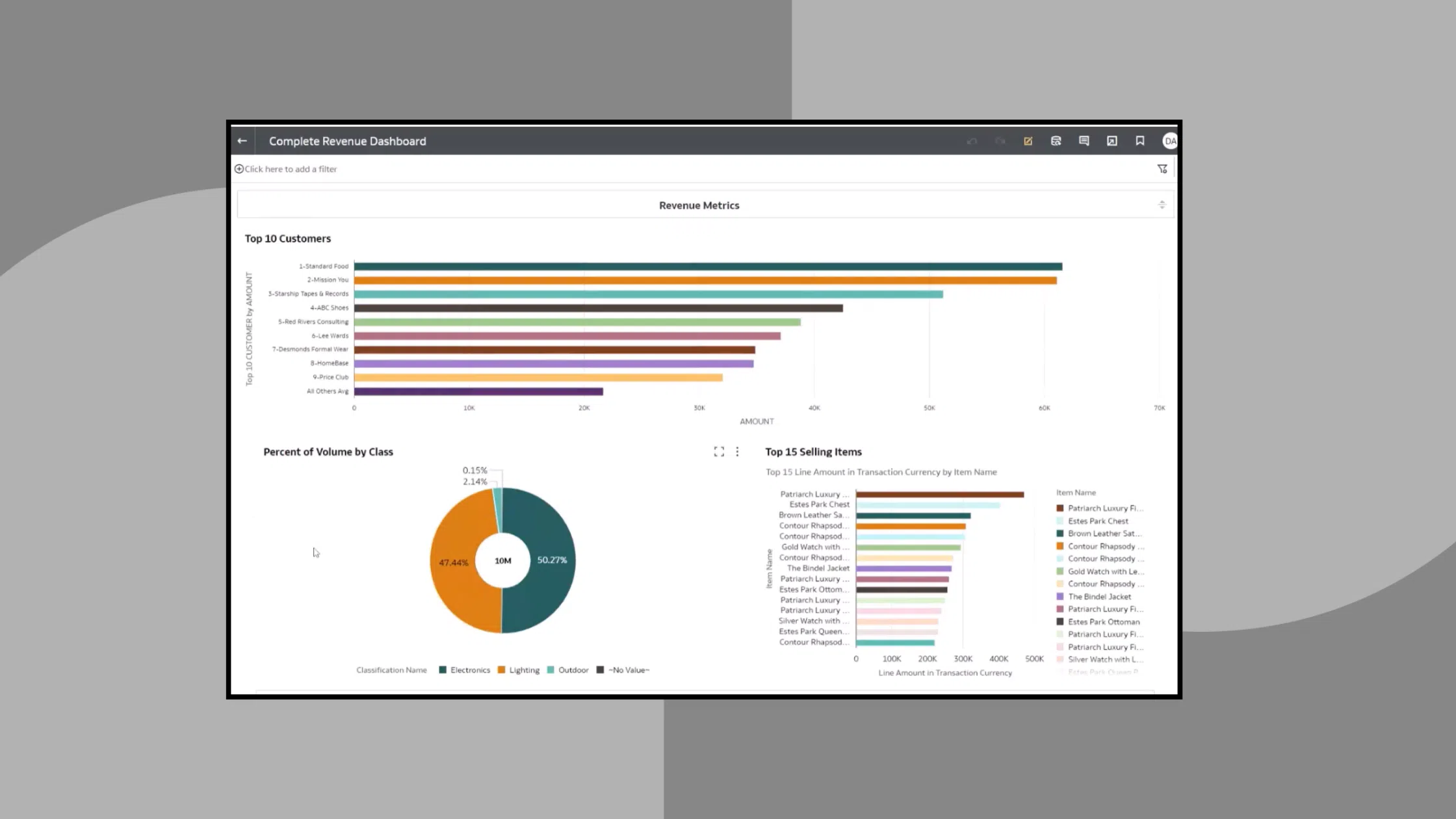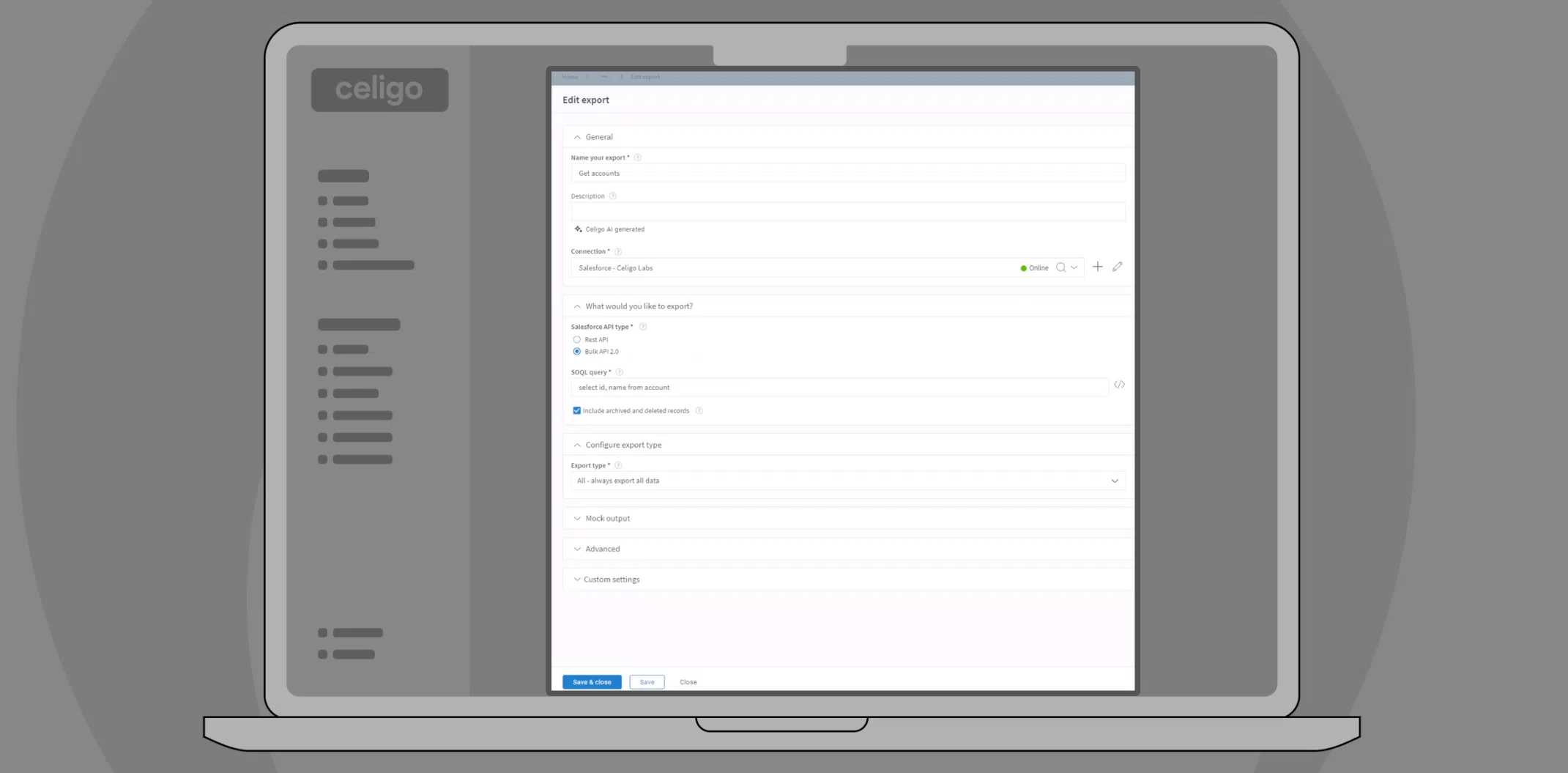Published Jul 14, 2023
Silos to synergy: Creating an inclusive work environment with Slack
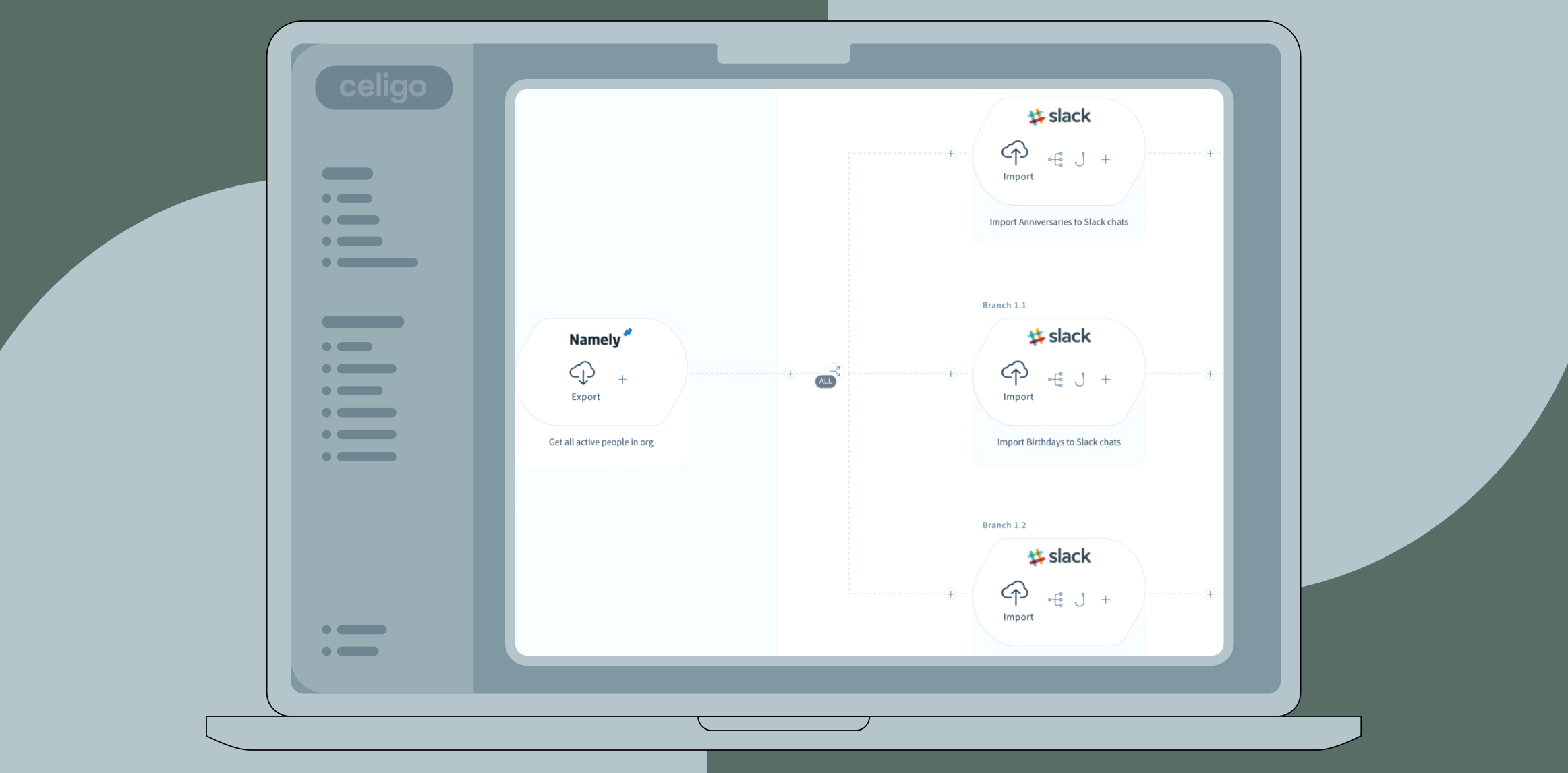
When working remotely, team members have fewer chances for serendipitous encounters and may not have sufficient knowledge about one another. This can result in reduced collaboration and a sense of disconnection among coworkers and across teams. This causes siloed work, where coworkers feel alone in an already isolated work environment.
This post demonstrates how to create a data integration flow that automates sending birthday wishes or work anniversary shout-outs to colleagues to help your organization create an inclusive environment where coworkers can reach out and collaborate with others.
Less collaboration and connection leads to lower team morale.
When team members learn more about each other, they create relationships and solve more problems. By congratulating, acknowledging, and celebrating others for their accomplishments or work anniversaries, other coworkers feel more enabled to reach out to others, which can help create synergy between employees and foster an inclusive work environment.
By using the Celigo Platform, we will create a seamless data integration with Namely as an HRIS endpoint and Slack as a collaboration tool. However, this integration isn’t limited to these endpoints alone. We are able to use various HRIS systems and collaboration tools like ADP, BambooHR, JazzHR, and Microsoft Teams. This highlights the flexibility of Celigo’s integration capabilities.
Overview of Flow
This is the entire overview of the flow. Be sure to have valid connections to the endpoints before getting started. In this example, we have set up a connection to Namely HR and set up a connection to Slack. An overview of the flow includes the export of all of the employee data, and this information will be passed into Slack as an import with a JavaScript hook to compare the dates of the employee start date and today’s date. This flow is set to run every day and alert a specific Slack channel along with a mapped message.
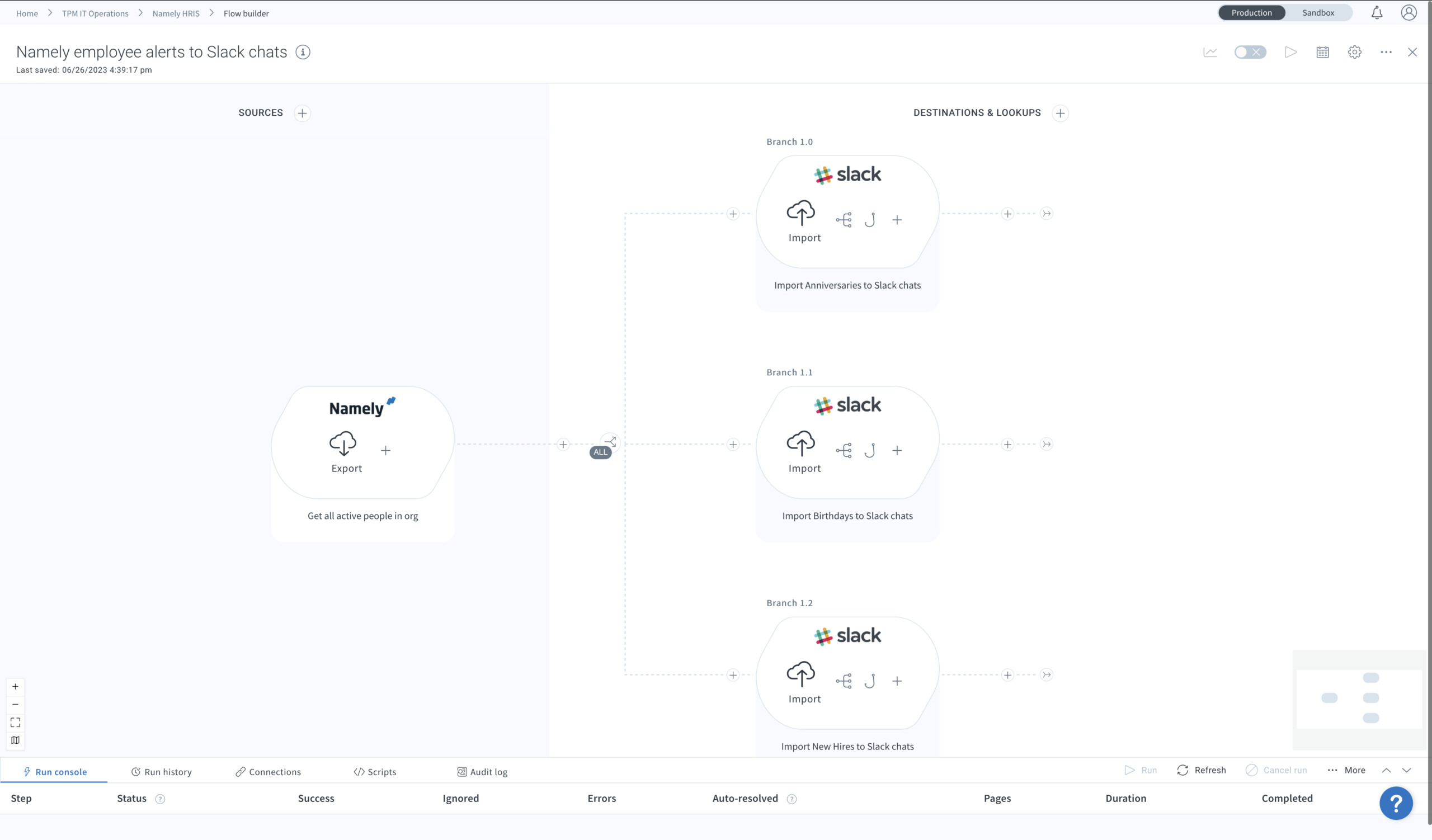
Namely Export
The first step of the flow is the Namely export. This export uses the Namely form view to get all the profiles in the org. There is also a search parameter to search only for active profiles. As the API endpoint describes, this will give us all of the profiles in Namely, and from the preview on the left, we can see all of the retrieved fields.
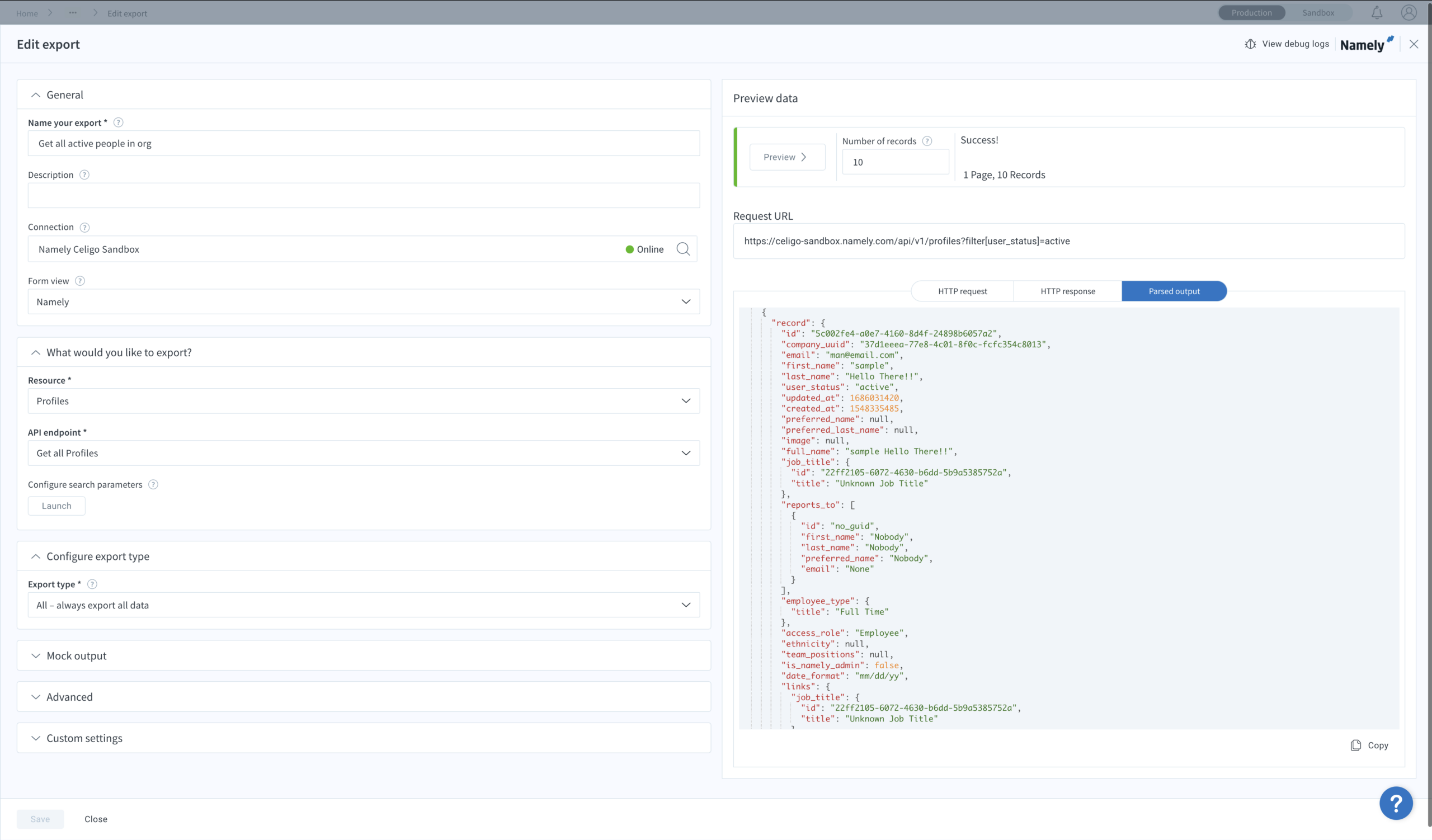
Slack Imports
All three Slack imports will be the same settings for each import; they will just differ on the mappings and script hooks.
We are able to perform three different branches with this flow because we are using the same information from Namely to compare the dates from. All the information is coming from the Namely user profiles or employees. Since these are different branches with the same export from Namely, they are able to be split up into individual flows depending on what information you want to share and celebrate with employees over Slack.
All three of these imports use the Slack chat API and the chat.postMessage API endpoint as shown in the figures below. Each import will be a separate message, one for work anniversaries, another for birthdays, and the last for new hires.
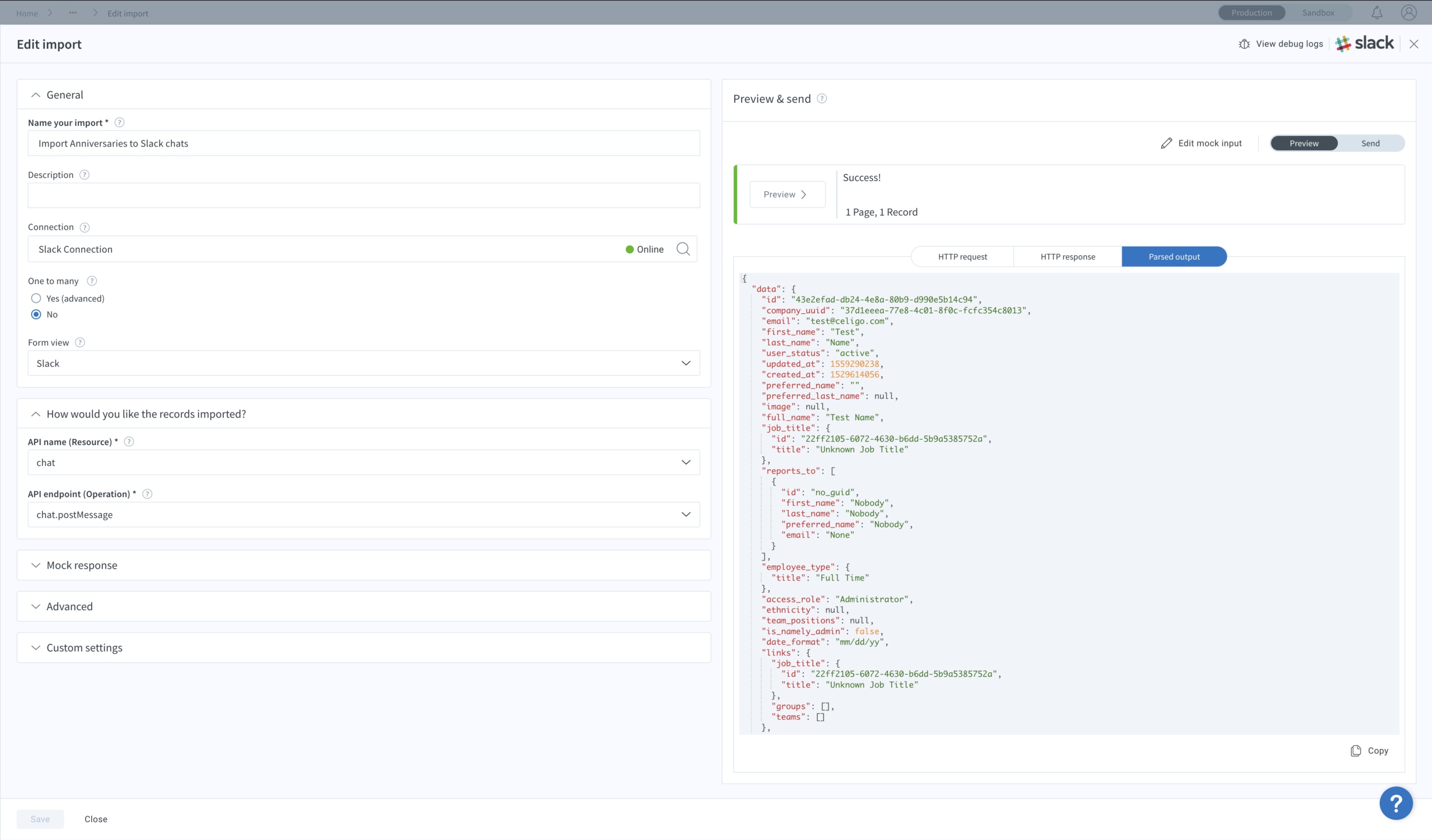
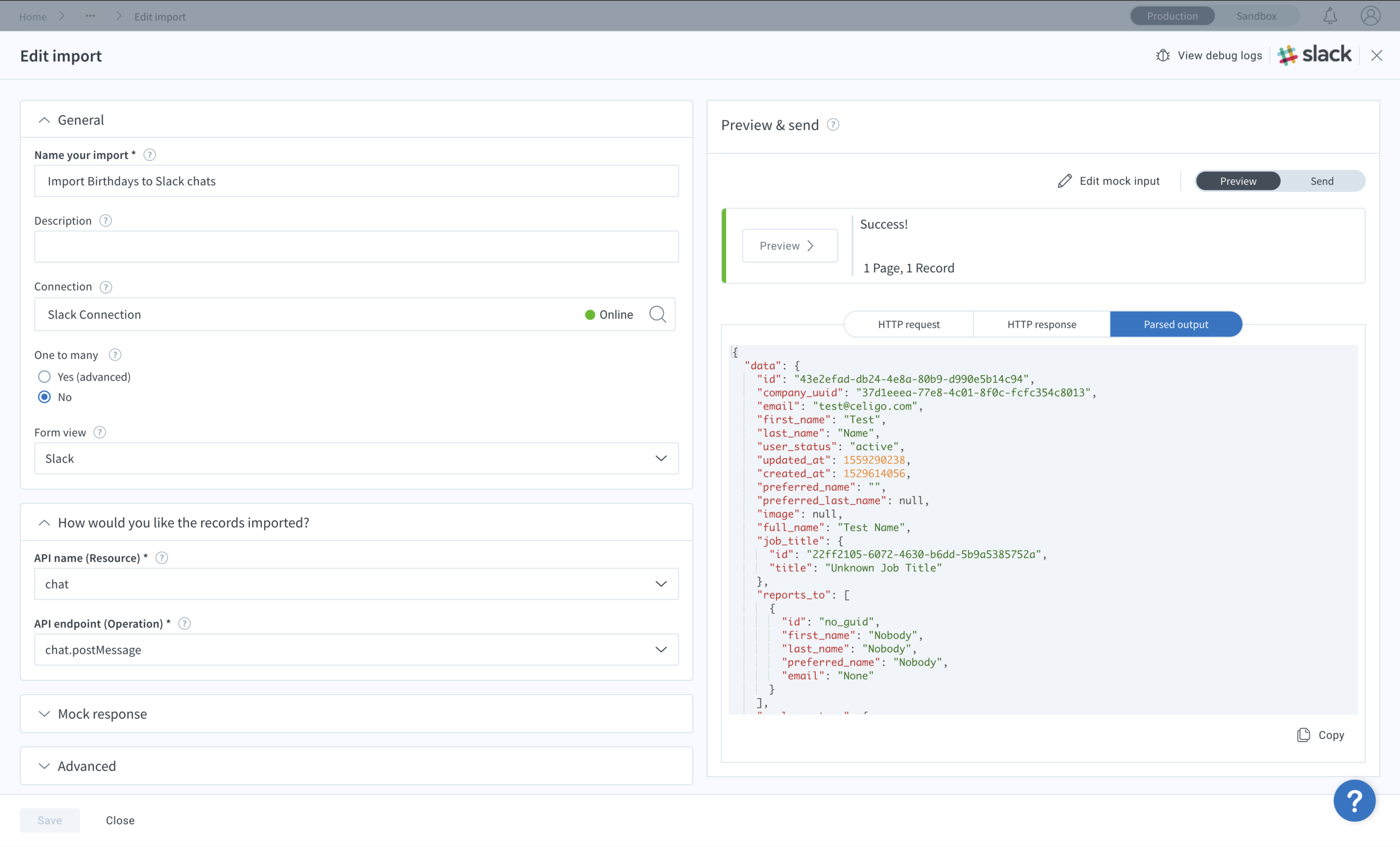
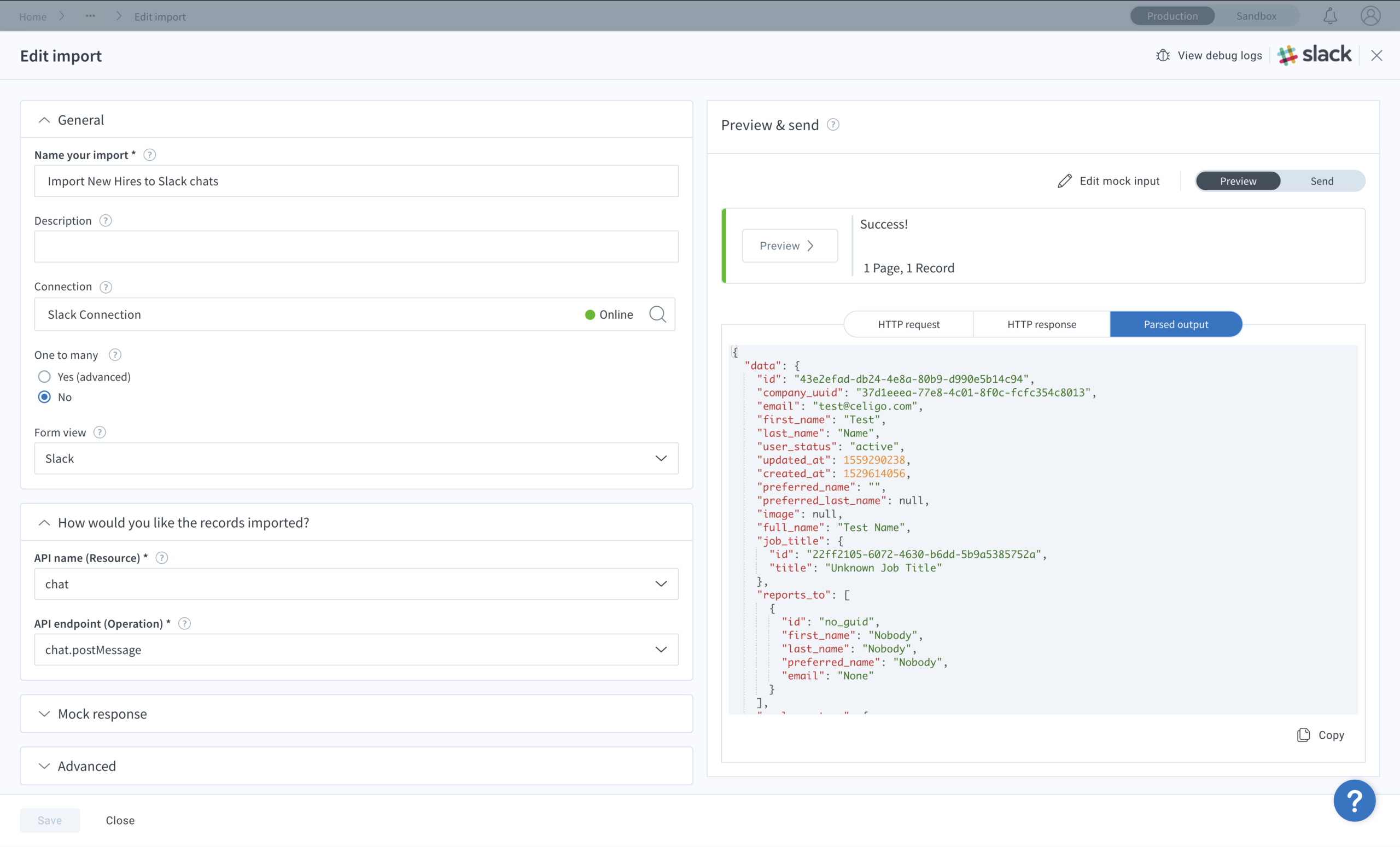
Slack Mappings
In the input mappings for all of the Slack imports, we have defined the text that will be displayed for each message showing “Happy Work Anniversary {full_name}!” for every employee with a corresponding work anniversary.
The only other input mapping we have configured is for the channel, which can be a general channel, an announcement channel, or a channel for specific managers or employees. The only thing needed to configure the channel correctly is the channel ID.
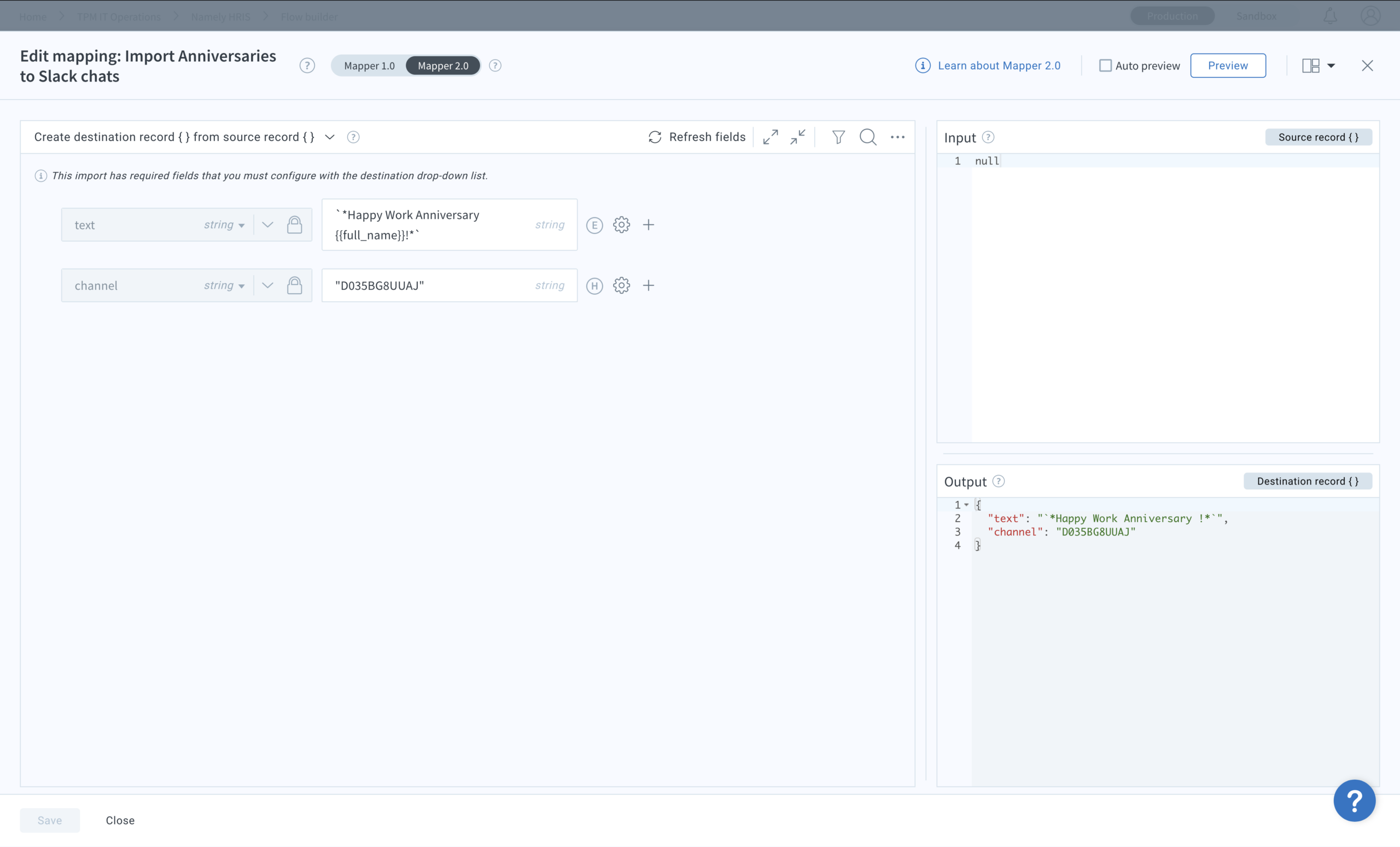
These same rules apply to the next two input mappings; we have configured “Please welcome {{full_name}} to the team!” as an introduction to all new hires, as well as “Happy Birthday {{full_name}}!” to those employees whose birthday it is.
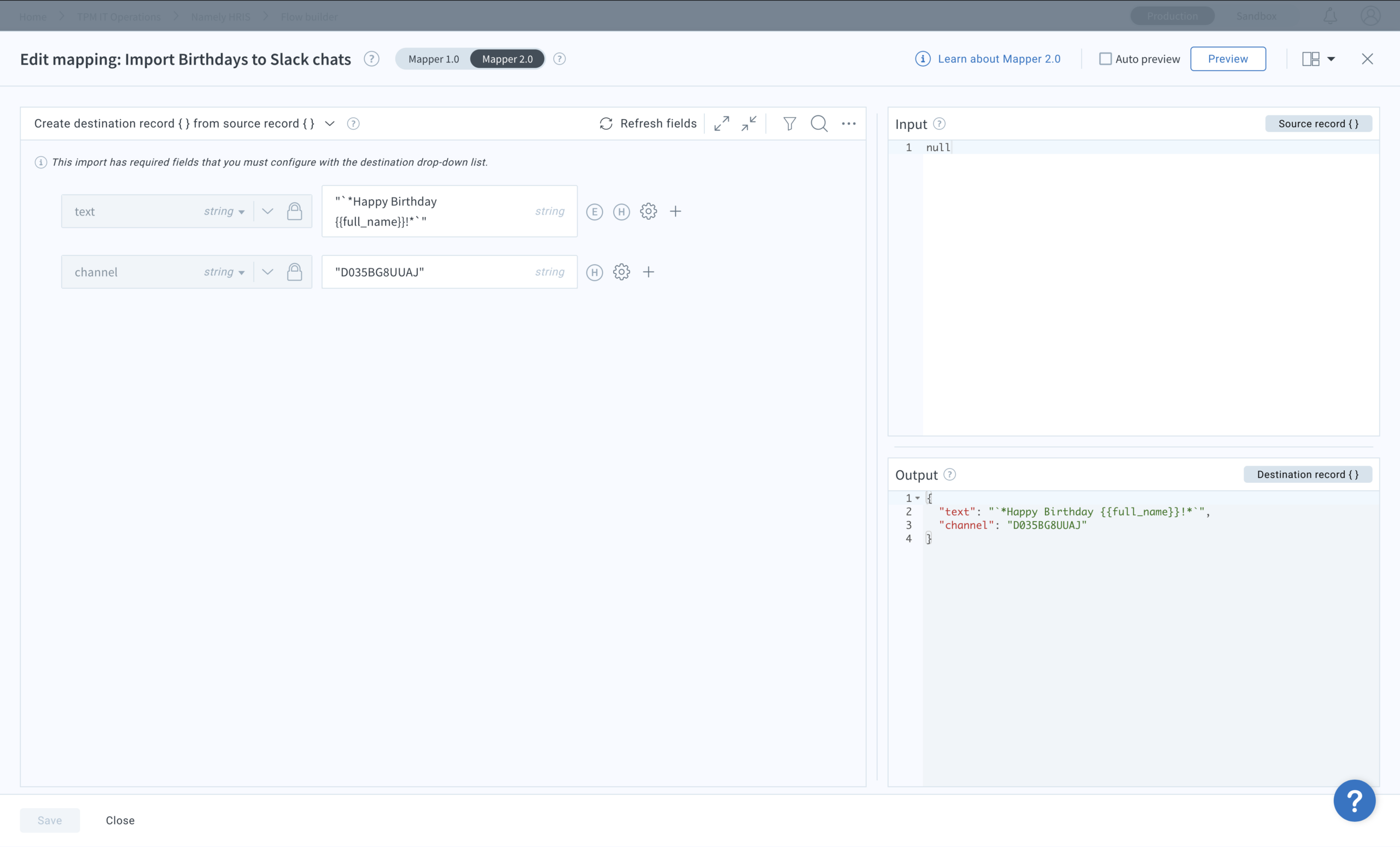
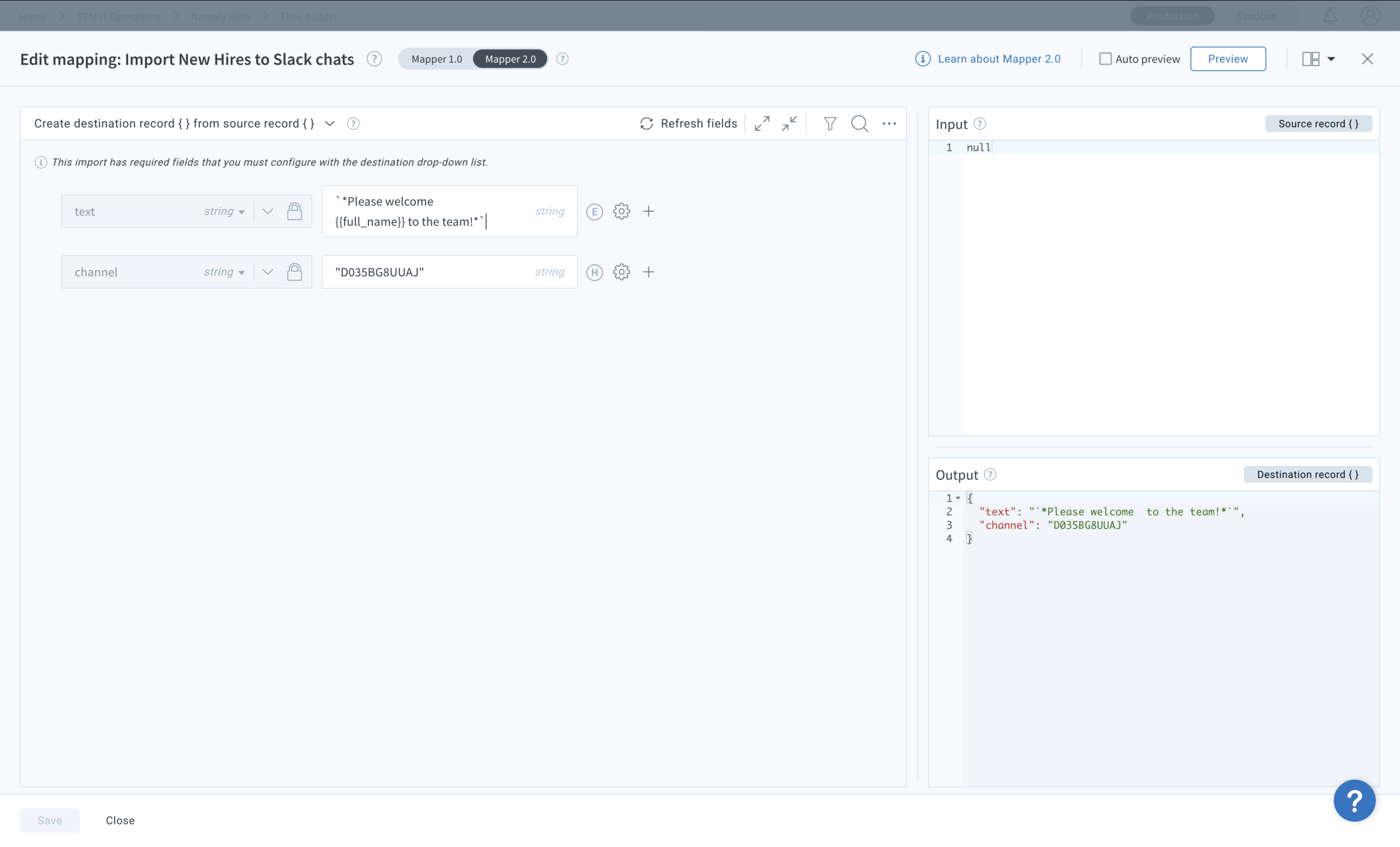
Slack Scripts
For our hook scripts that we have set up, they are relatively the same across all three imports, the only part that changes is what we are comparing and if we are comparing the year or not. For example, for work anniversaries, we want to make sure the year an employee is hired is not the same as the current year; if that were the case, then they would be a new hire. From the commented sections below, we have a function that compares the current date to the selected date, either the start date or the date of birth.
The anniversariesToSlack & the newHireAlerts functions both use the employee start date as shown in the function output to compare the current date and will output a message for each record that it matches. The last function, dobAlert, will return a message when the current month and day are equal to today’s date.
These scripts can be as complex or as simple as you’d like, and with Celigo, you can make it yours!
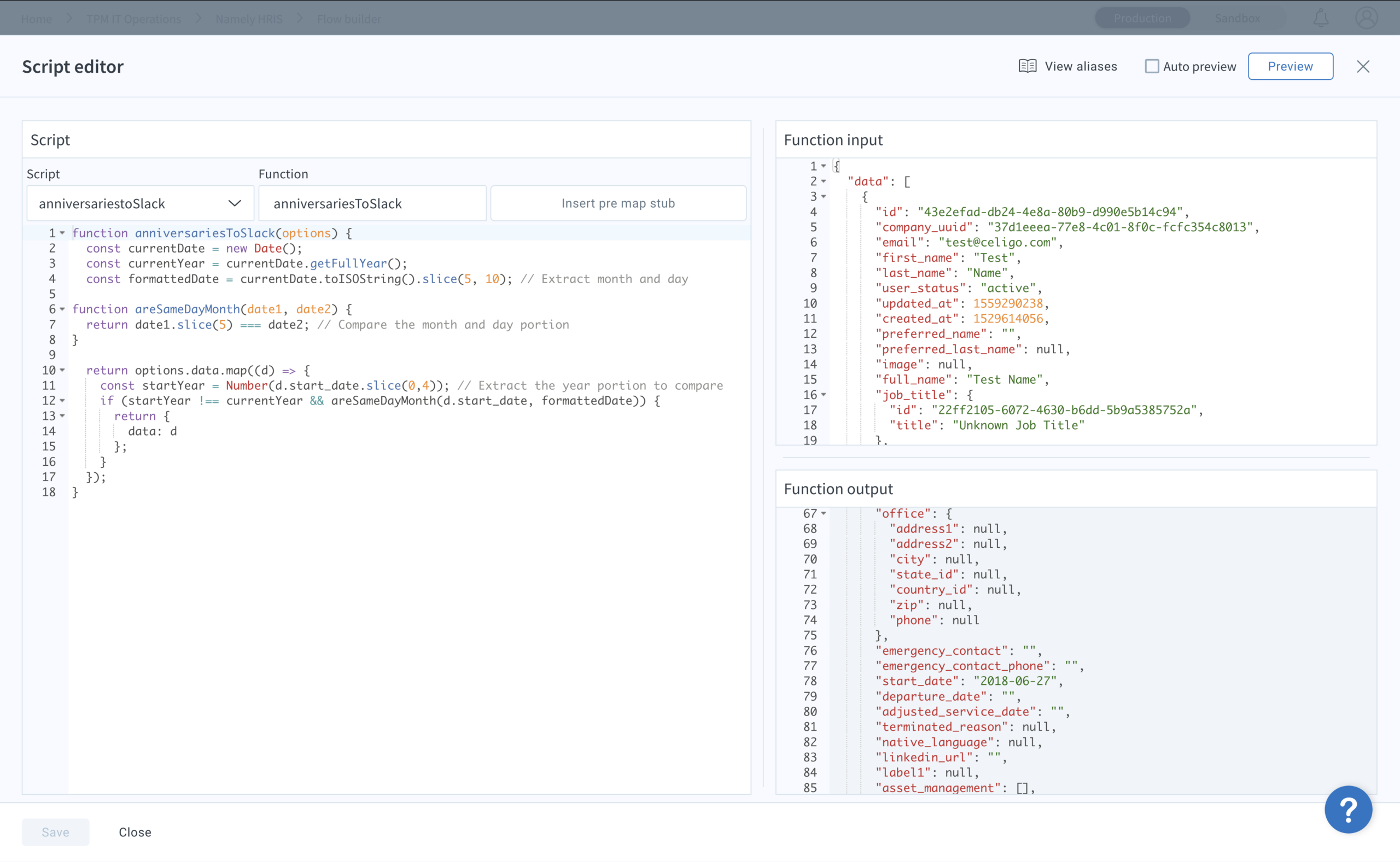
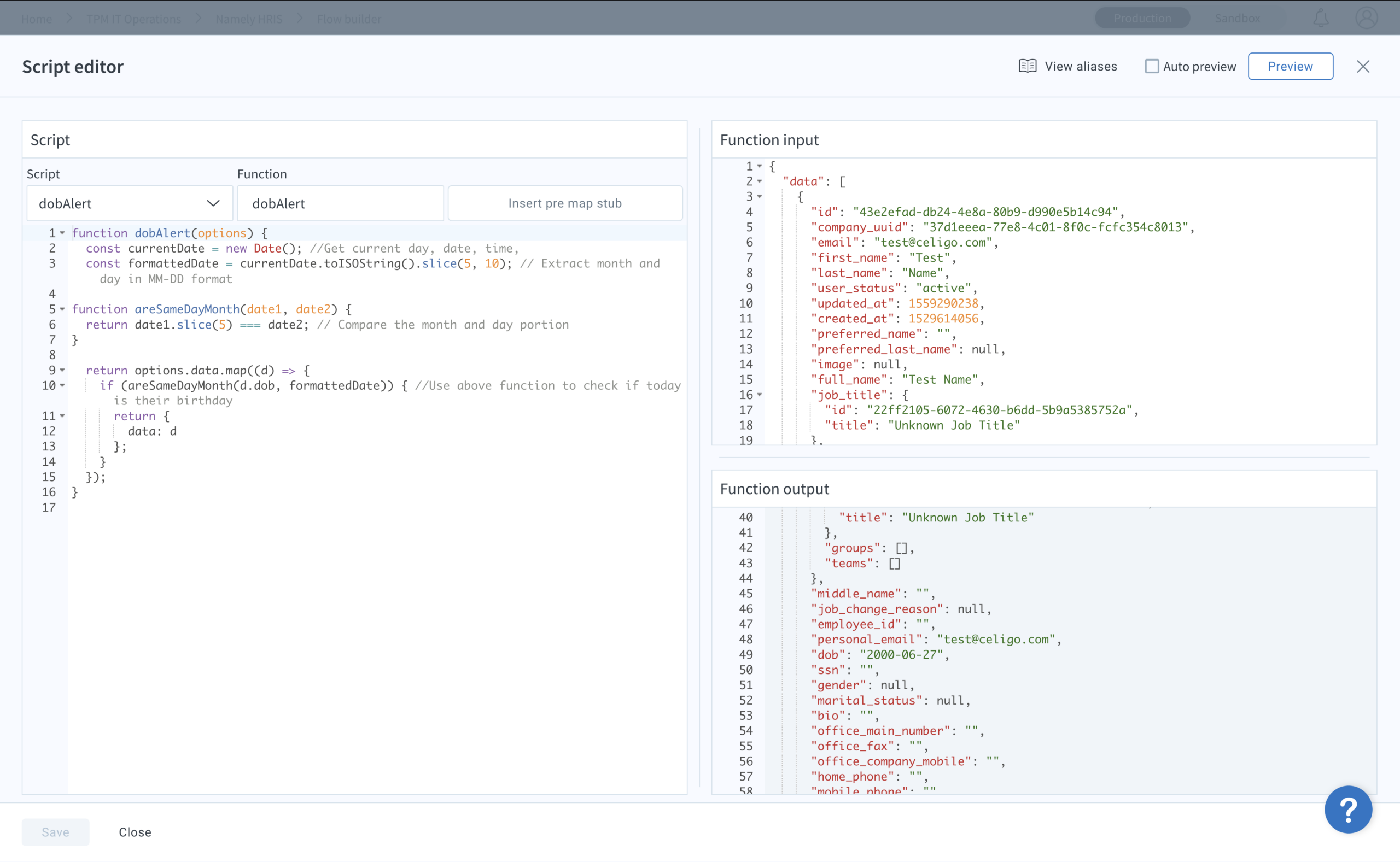
You’ve now created a more inclusive workspace for all your employees!
You’ve now created a more inclusive workspace for all your employees! Once this flow has been set up, it is recommended that it be run once daily, in the morning, so that employees can be notified, celebrated, and acknowledged accordingly.
This is just one example of how integration can not only solve a business problem but can catalyze a culture change in the workplace. By embracing more than one way of data integration, Celigo can open up new channels for communication, collaboration, and shared knowledge between coworkers.
Integration insights
Expand your knowledge on all things integration and automation. Explore our resources, learn from experts, and elevate your building expertise.


